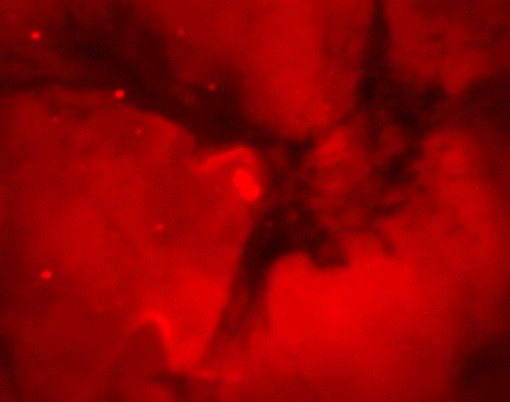Credit & Copyright: David McDavid (
Limber Observatory)
Explanation:
Clouds of glowing hydrogen gas mingle with dark dust lanes in
the Trifid Nebula,
a star forming region in the constellation Sagittarius.
In this and other similar emission
nebulae, energetic
ultraviolet light from an embedded hot young star strips
electrons from the surrounding
hydrogen atoms.
As the
electrons and atoms recombine they emit longer wavelength,
lower energy light in a well known
characteristic pattern of bright spectral lines.
At visible wavelengths,
the strongest emission line in this pattern is in the
red part of the spectrum and is known as "Hydrogen-alpha" or just H-alpha.
This image of the nebula was taken using a filter to select
only light near the H-alpha wavelength.
It shows those regions with substantial
emission from
atomic hydrogen.
The relative strength of this emission can trace the
densities of atoms within the gas cloud.
1999 2000 2001 2002 2003 2004 2005 2006 2007 2008 2009 2010 2011 2012 2013 2014 2015 2016 2017 2018 2019 2020 2021 2022 2023 2024 2025 |
Yanvar' Fevral' Mart Aprel' Mai Iyun' Iyul' Avgust Sentyabr' Oktyabr' Noyabr' Dekabr' |
NASA Web Site Statements, Warnings, and Disclaimers
NASA Official: Jay Norris. Specific rights apply.
A service of: LHEA at NASA / GSFC
& Michigan Tech. U.
|
Publikacii s klyuchevymi slovami:
H-alpha - emission nebula - atomic hydrogen - Bal'mera seriya - emissionnaya tumannost' - vodorod
Publikacii so slovami: H-alpha - emission nebula - atomic hydrogen - Bal'mera seriya - emissionnaya tumannost' - vodorod | |
Sm. takzhe:
Vse publikacii na tu zhe temu >> | |
